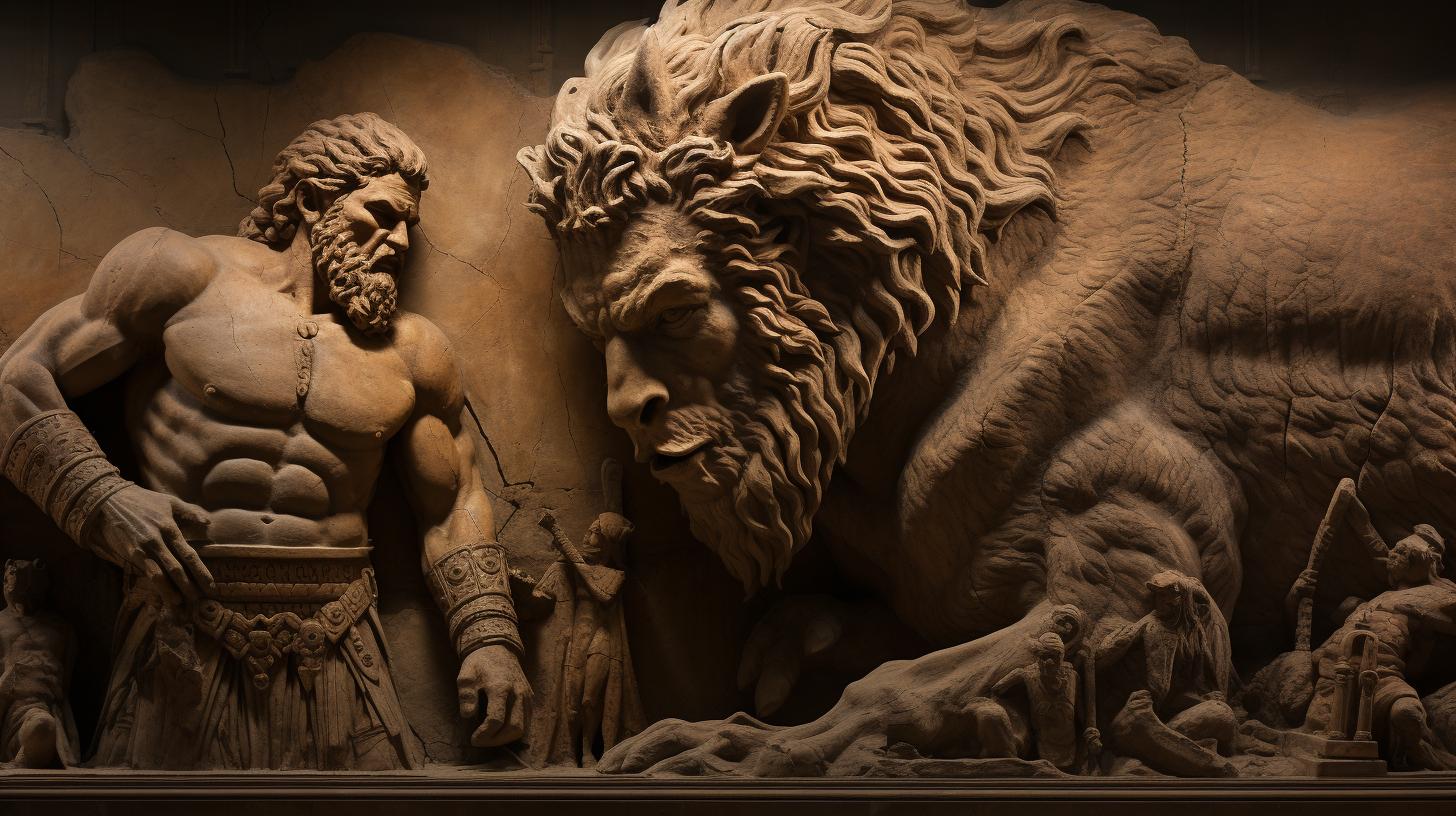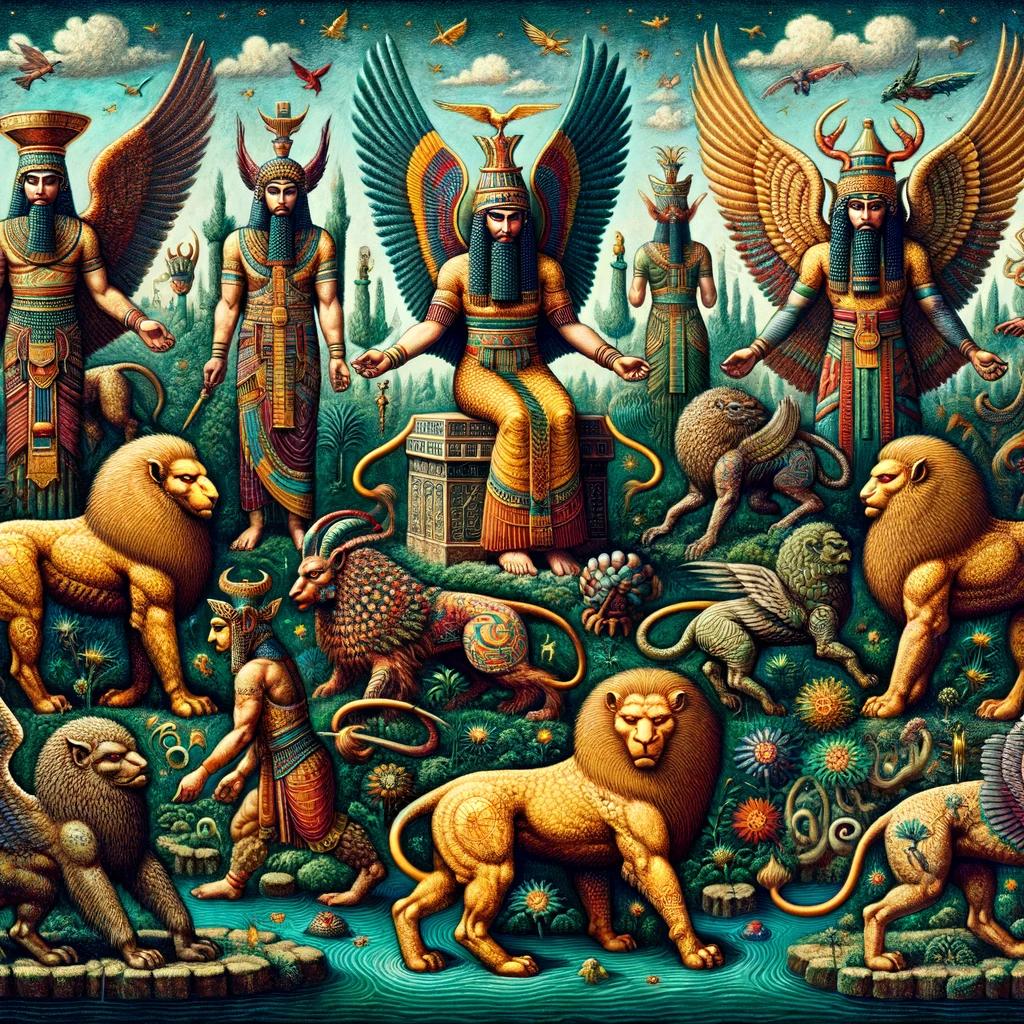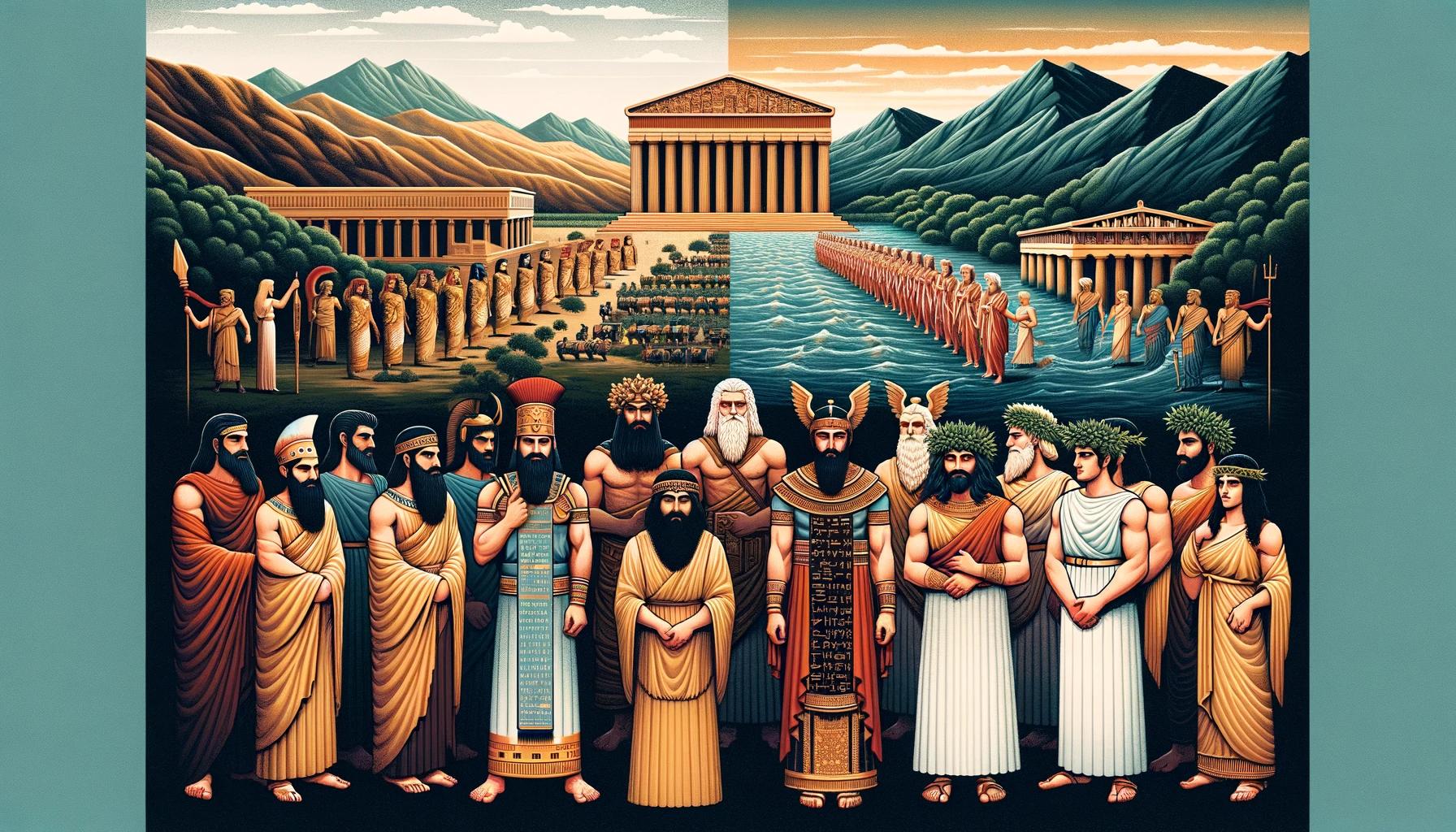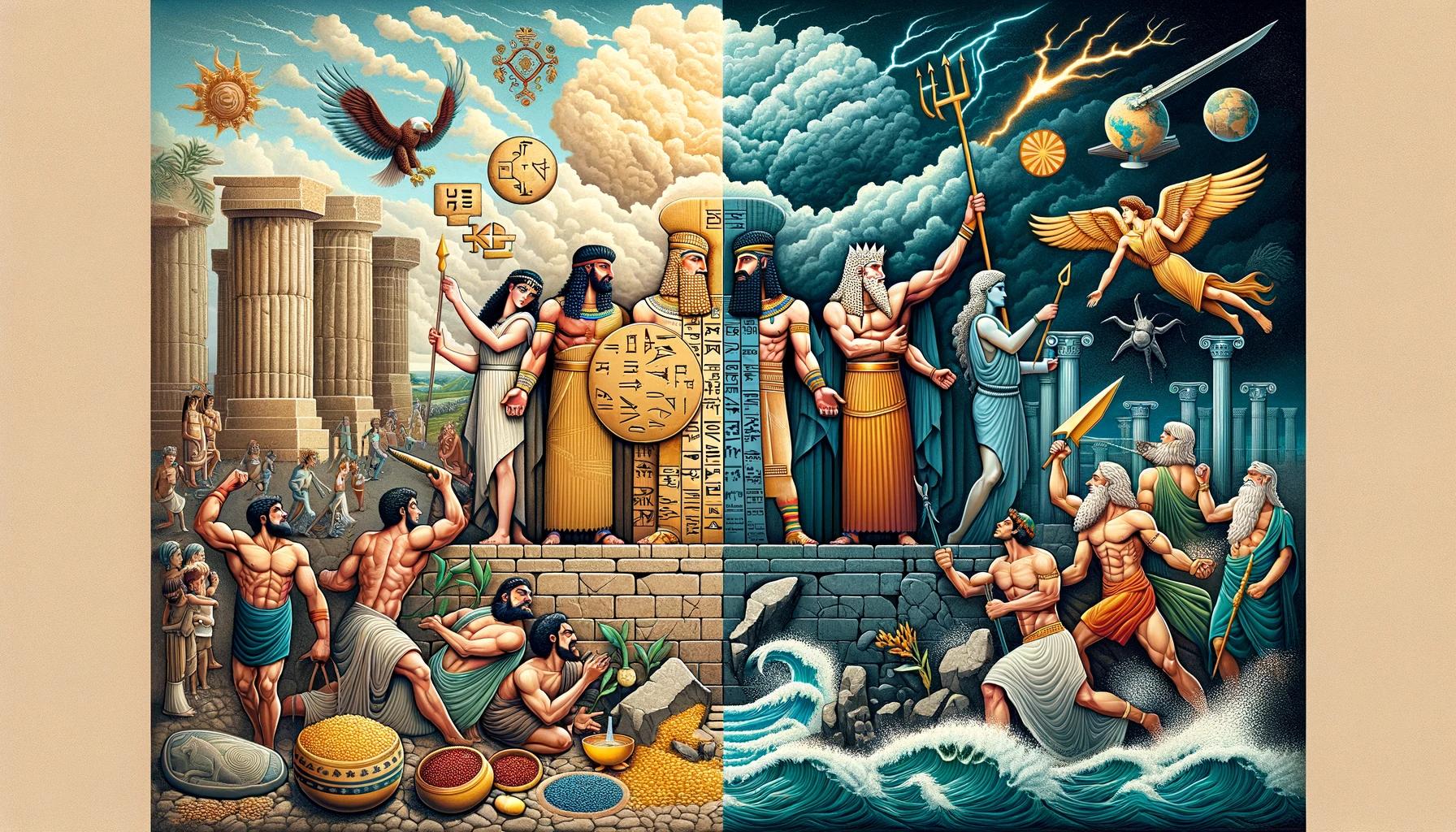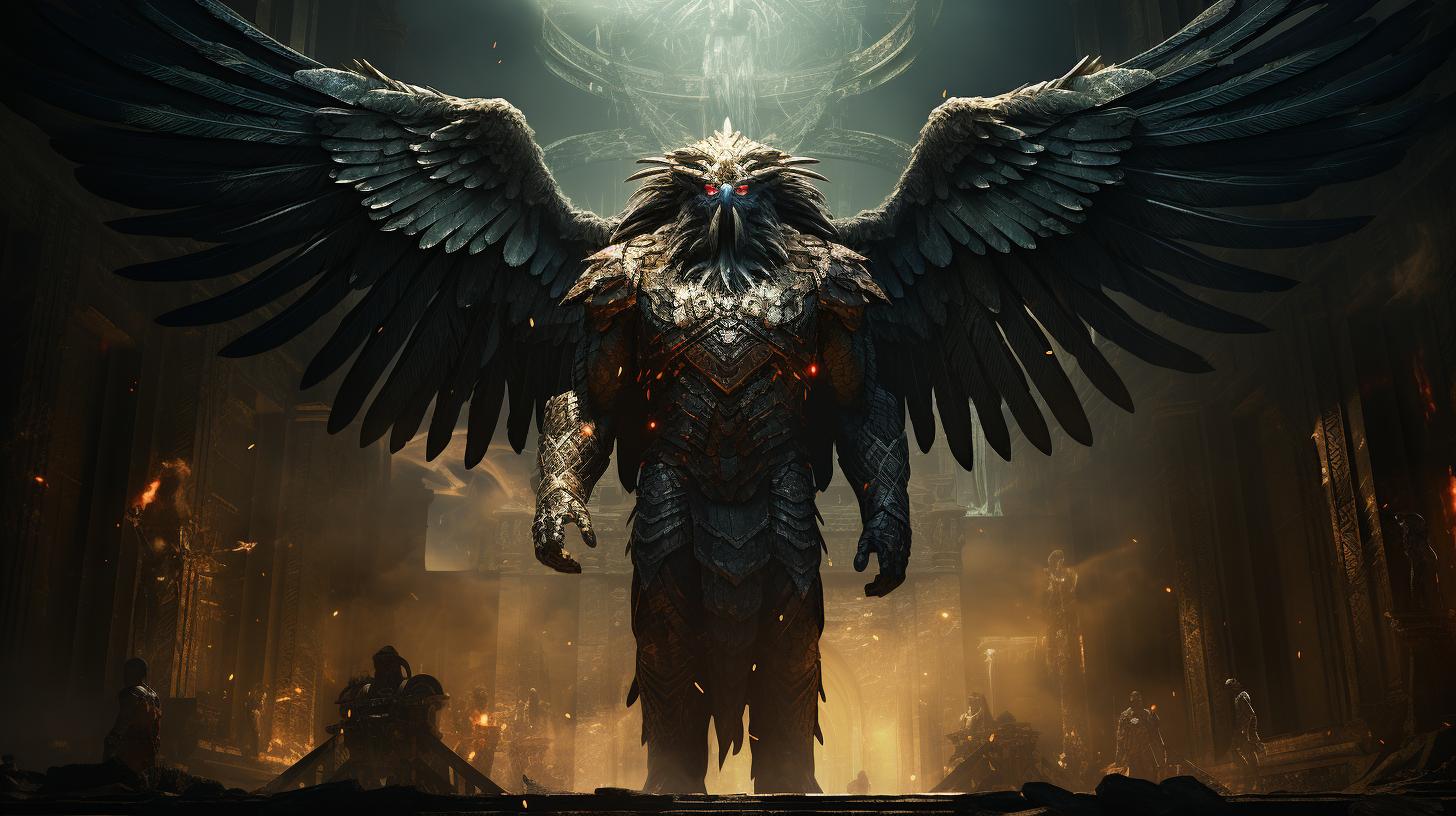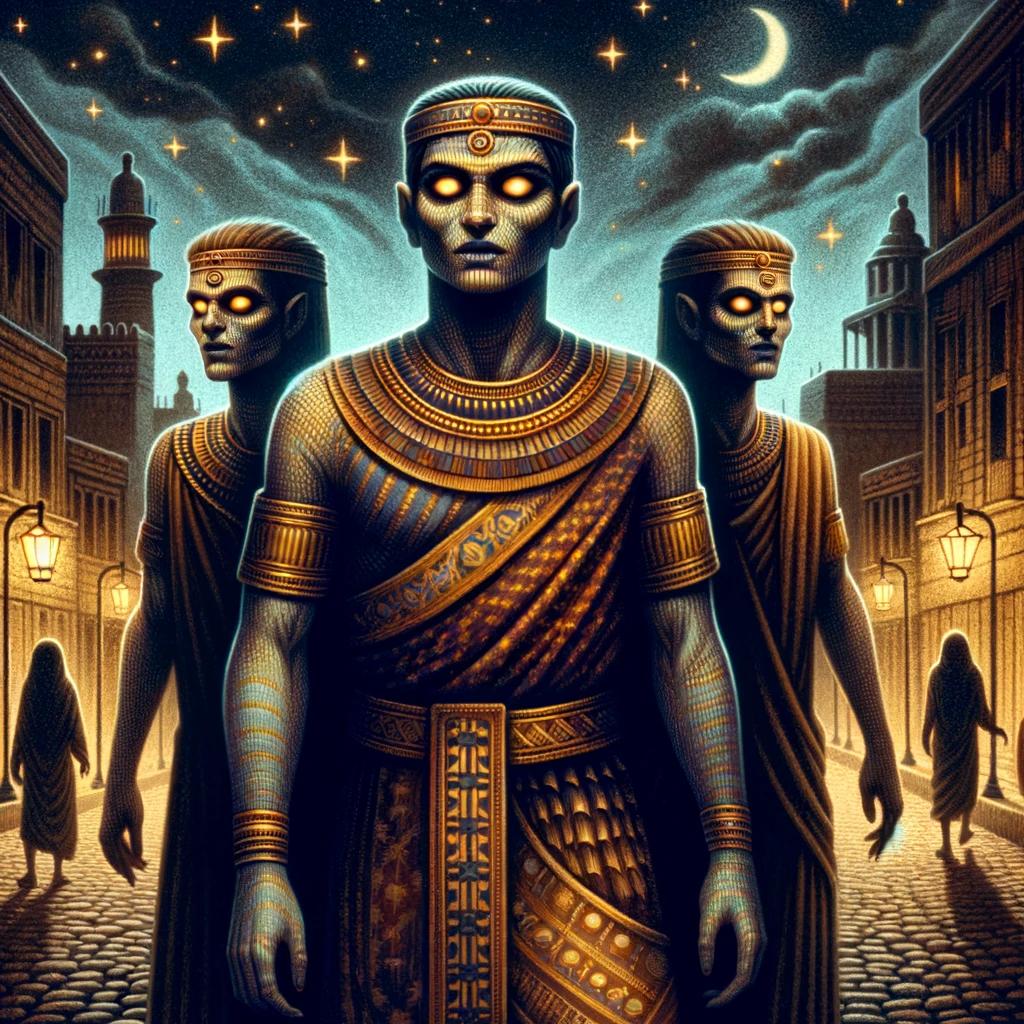Mesopotamian Love Story: Unveiling the Ancient Romance of the Cradle of Civilization

Mesopotamian Love Story delves into the ancient romance of Mesopotamia, the cradle of civilization. Exploring the origins, cultural significance, and literary themes of love in Mesopotamian society, this article uncovers the oldest known love poem, the Poem of Shu-Sin. It also delves into the ritual of sacred marriage, examining the role of love, fertility, and mythology.
Additionally, it examines the views on love, desire, and sexuality in Mesopotamian culture, as well as the musical expressions of love through Mesopotamian love songs. Furthermore, it sheds light on Mesopotamia’s influence on world history, literature, and the efforts to preserve its cultural heritage.
Mesopotamian Love Story: Exploring the Ancient Romance
Welcome to the fascinating world of Mesopotamian love, where we unravel the origins, cultural significance, and literary themes surrounding this ancient civilization’s romantic tales. In this section, we delve into the deep-rooted love traditions of Mesopotamia and their enduring impact on history and literature.
Origins of Love in Mesopotamia
Love has always been a universal language, and Mesopotamia is no exception. By examining the origins of love in this region, we gain insight into the early expressions of affection, desire, and devotion that permeated their society.
From the earliest recorded love poems to the complex rituals surrounding sacred marriages, we uncover the roots of Mesopotamian love.
Cultural Significance of Love in Mesopotamian Society
In Mesopotamian society, love went far beyond mere personal emotions; it held a profound cultural significance that shaped relationships and societal structures. Through an exploration of their art, literature, and social customs, we uncover the deep-rooted appreciation and celebration of love prevalent among the Mesopotamians.
Discover how love influenced their understanding of family, social connections, and the divine.
Love as a Central Theme in Mesopotamian Literature
Literature serves as a window into the heart and soul of a civilization, and in Mesopotamia, love and its various manifestations took center stage. From epic tales of love and loss to poignant love poetry, we explore how Mesopotamian writers crafted compelling narratives that depicted the complexities of human relationships, desire, and the pursuit of love’s fulfillment.
Join us as we delve into the timeless themes and poetic expressions of love in Mesopotamian literature.
The Oldest Love Poem: Unearthing the Poem of Shu-Sin
The Poem of Shu-Sin stands as a remarkable discovery shedding light on the ancient romance of Mesopotamia. This significant finding unravels insights into the origins of love in this region and its cultural significance in Mesopotamian society.
The poem’s discovery, made in 1951 by the esteemed sumerologist Samuel Noah Kramer, marked a turning point in our understanding of ancient love literature. Its significance cannot be overstated, as it challenges the previous belief that the oldest love poem was found in the biblical book of Cantares.
Discovery and Significance of the Poem
The Poem of Shu-Sin was found inscribed on a cuneiform tablet stored in the Museum of Istanbul, Turkey. It remained untranslated and unknown until Samuel Noah Kramer’s groundbreaking discovery.
This poem played a crucial role in the sacred marriage ritual, a symbolic union between the king and the goddess Inanna to ensure fertility and prosperity for the upcoming year. The recitation of this poem by the chosen bride during the festivities served as a proclamation of the king’s beauty and an expression of love towards him.
Analysis of the Poem’s Themes and Imagery
Through a careful analysis of the Poem of Shu-Sin, we can explore the rich themes and vivid imagery present in this ancient love composition. The poem portrays the king’s captivating charm and the goddess Inanna’s desire, providing glimpses into the complexities of love and desire in Mesopotamian culture.
Imbued with metaphors, symbols, and sensual descriptions, the poem invites us to delve into the depths of passion and the power of love as expressed in the ancient world.
Comparisons to Other Ancient Love Poems
When comparing the Poem of Shu-Sin to other ancient love poems, it becomes evident that its discovery revolutionized our understanding of early literary expressions of love. Previously, the biblical book of Cantares was considered the oldest love poem.
However, the Poem of Shu-Sin predates it, offering a unique perspective on ancient Mesopotamian love and challenging our preconceived notions. By examining the similarities and differences between these love poems, we gain a broader appreciation for the diverse ways in which love has been celebrated across different cultures and time periods.
The Ritual of Sacred Marriage: Love, Fertility, and Mythology
The Ritual of Sacred Marriage held significant cultural and religious importance in ancient Mesopotamia. This sacred ceremony symbolized the union between the king, represented by Shu-Sin, and the goddess Inanna, ensuring the prosperity and fertility of the kingdom for the upcoming year.
Understanding the Sacred Marriage Ceremony
The Sacred Marriage Ceremony, also known as the ‘matrimonio sagrado,’ took place on the day of the New Year and was a grand celebration filled with festivities. It involved elaborate rituals, feasts, music, dance, and songs, reflecting the sacred nature of the union between the divine and human.
Role of the King and the Goddess Inanna in the Ritual
In this ritual, the king played the role of Dumuzi, the god of agriculture and livestock, while the chosen bride represented the goddess Inanna. The king and the goddess engaged in symbolic sexual relations, believed to ensure the fertility and abundance of the land.
Symbolism and Beliefs Surrounding the Ceremony
The Sacred Marriage Ceremony carried profound symbolism and held strong beliefs. It was believed that through the union of the king and the goddess, the divine and earthly realms merged, leading to the continuation of life, the renewal of the natural cycle, and the overall prosperity of the kingdom.
- The ceremony represented the harmonious relationship between gods and humans, signifying the importance of divine blessings for the well-being of the society.
- The sexual aspect of the ritual symbolized the union of masculine and feminine forces, essential for the creation and nourishment of life.
- The bride’s recitation of the Poem of Shu-Sin expressed adoration for the king’s beauty and celebrated his role as the representative of the divine on earth.
- The ritual’s festivities, with their joyous music, dance, and feasts, aimed to invoke the favor of the gods and goddesses for abundant crops, successful harvests, and general prosperity of the kingdom.
The Sacred Marriage Ceremony showcased the integral role of love, fertility, and mythology in the religious and cultural practices of ancient Mesopotamia.
It acted as a powerful symbol of the connection between the divine realm and human existence, highlighting the importance of love and its impact on the well-being of the community.
Love, Desire, and Sexuality in Mesopotamian Culture
Love, desire, and sexuality held significant roles in Mesopotamian culture, offering insights into the social dynamics and beliefs of ancient civilizations in the region.
This section explores the various aspects of love in Mesopotamian society, including views on love, desire, and relationships, gender roles and expectations in romantic interactions, and the influence of love on daily life and society.
Views on Love, Desire, and Relationships
Love was highly regarded in Mesopotamian culture, seen as a powerful force that shaped personal and communal bonds. Mesopotamians believed in the importance of emotional connections and companionship in romantic relationships, valuing love as a source of happiness, fulfillment, and prosperity.
Their understanding of love extended beyond physical attraction, emphasizing the significance of emotional intimacy and loyalty.
Gender Roles and Expectations in Romantic Interactions
Mesopotamian society embraced distinct gender roles and expectations when it came to romantic interactions. Men were typically depicted as pursuers, while women were seen as objects of desire and nurturers. Patriarchal structures governed romantic relationships, with men often taking the lead in courtship rituals and having more control over decision-making processes.
However, both genders were expected to uphold certain virtues, such as fidelity and devotion, in their relationships.
The Influence of Love on Daily Life and Society
Love permeated various aspects of daily life and had a profound impact on Mesopotamian society. Strong emotional connections were deemed essential for maintaining harmonious family units and societal cohesion. Love played a central role in procreation and the continuation of the family lineage, as producing offspring was considered a significant expression of love and devotion.
Furthermore, love’s influence extended to broader cultural practices, such as the worship of love deities and the incorporation of love themes in art, literature, and music.
Mesopotamian Love Songs: Exploring Musical Expressions of Love
Within the rich cultural tapestry of Mesopotamia, love songs held an essential role in expressing the deep emotions and sentiments associated with love.
These musical expressions served as a window into the romantic inclinations and desires of this ancient civilization. Through the exploration of Mesopotamian love songs, we gain insight into their values, beliefs, and the intertwining of music and love.
Importance of Love Songs in Mesopotamian Culture
Love songs occupied a significant place in Mesopotamian culture, reflecting the importance of love and relationships in their society. These musical compositions served as a means of emotional expression, capturing the longing, passion, and devotion experienced by individuals in their romantic pursuits.
Love songs were often performed during social gatherings, celebrations, and even religious ceremonies, enhancing the overall ambiance and creating a sense of unity and shared experience.
Themes and Lyrics in Mesopotamian Love Songs
The themes and lyrics found in Mesopotamian love songs showcased a wide range of emotions and experiences related to love.
They explored topics such as courtship, desire, longing, loyalty, heartbreak, and the joys of romantic union. The lyrics of these songs often depicted the roles and expectations of both men and women in love, offering a glimpse into the intricacies of interpersonal relationships within their culture.
Some love songs highlighted the beauty of the beloved, while others lamented the pain of unrequited love, encompassing the full spectrum of human experiences in matters of the heart.
Musical Instruments and Performances in Love Songs
The musical accompaniment in Mesopotamian love songs played a crucial role in setting the mood and amplifying the emotional impact of the lyrics.
A variety of instruments, including lyres, harps, flutes, and drums, were used to create melodic and rhythmic compositions that complemented the themes of love. These instruments were skillfully played by musicians who were highly regarded in Mesopotamian society.
Love songs were performed both in private settings, as intimate serenades between lovers, and in more public settings, where they entertained and uplifted audiences during social gatherings and festivities.
In conclusion, Mesopotamian love songs offer a fascinating insight into the emotional world of ancient civilization.
Through their exploration, we uncover the cultural significance, thematic diversity, and the close connection between music and love in Mesopotamian society. The integration of love songs in various aspects of life reflects their deep-rooted understanding of the power of music to express and evoke profound emotions.
Mesopotamia’s Influence on World History and Literature
Examinations of Mesopotamian Love Story’s Impact
Understanding the impact of Mesopotamian love stories is crucial to appreciating their significance in the history of world literature. These ancient narratives offer insights into the complexities of human emotions and relationships, providing a foundation for the exploration of love in subsequent cultural and literary works.
Connections to Biblical Narratives and Theology
The influence of Mesopotamian love stories on biblical narratives and theology cannot be overstated. The discovery of texts such as the Poem of Shu-Sin sheds light on the cultural and literary ties between Mesopotamia and biblical traditions.
By examining these connections, we gain a deeper understanding of the historical and cultural context that shaped biblical love stories.
Influence on Later Literary Works and Cultures
The impact of Mesopotamian love stories extends far beyond ancient times. These narratives have inspired countless later literary works, providing a foundation for the exploration of love and romance in various cultures.
From the epic poetry of Homer’s Iliad and Odyssey to the themes of love and desire in Shakespearean plays, the echoes of Mesopotamian love stories can be seen throughout the history of literature.
- Examining the enduring influence of Mesopotamian love stories on world literature
- Uncovering the cultural and literary ties between Mesopotamia and biblical narratives
- Tracing the echoes of Mesopotamian love stories in later literary works and cultures
In conclusion, the legacy of Mesopotamian love stories reverberates through time, influencing not only the history of literature but also our understanding of human emotions and relationships.
By delving into their impact, connections to biblical narratives, and subsequent influence on world literature, we can appreciate the enduring power and significance of these ancient tales.
Preserving Mesopotamian Love: Rediscovering the Past
In order to safeguard the rich heritage of Mesopotamian love, concerted conservation efforts for Mesopotamian artifacts are crucial.
These artifacts provide invaluable insights into the ancient culture’s beliefs, rituals, and artistic expressions of love.
Conservation Efforts for Mesopotamian Artifacts
An extensive network of archaeologists, historians, and curators work relentlessly to preserve and restore Mesopotamian artifacts. This involves meticulous documentation, scientific analysis, and utilizing modern conservation techniques to prevent deterioration and ensure their long-term survival.
Importance of Cultural Heritage Preservation
Preserving Mesopotamian artifacts is not merely an act of safeguarding objects; it is a commitment to protecting our collective human history and understanding. By maintaining and conserving these artifacts, we can continue to explore and appreciate the rich cultural tapestry of Mesopotamia, including its profound love stories.
Promoting Education and Awareness of Mesopotamian Love Story
Efforts to disseminate knowledge about Mesopotamian love stories are essential in fostering appreciation and understanding among the general public. Through educational programs, exhibitions, and online resources, we can spread awareness about the significance of Mesopotamian love, ensuring its lasting legacy in the hearts and minds of future generations.
.












